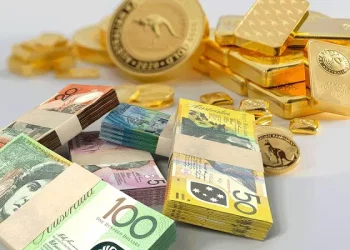Introduction to Exchange Rates:
Exchange rates represent the value of one currency in terms of another. They indicate how much of one currency is needed to purchase a unit of another currency. These rates play a crucial role in the global economy, impacting various stakeholders including travelers, investors, and businesses.
For travelers, exchange rates determine the purchasing power of their home currency in foreign countries. Investors monitor exchange rates to assess the profitability of international investments and to hedge against currency risk. Businesses, especially those engaged in international trade, rely on exchange rates to price their products, manage expenses, and mitigate foreign exchange risk.
SGD to MYR Exchange Rate:
As of the latest data available, the exchange rate for 1 Singapore Dollar (SGD) to Malaysian Ringgit (MYR) is 3.525841. This rate has significant implications for individuals and businesses dealing with these currencies. For travelers, a favorable exchange rate means they can get more Malaysian Ringgit for each Singapore Dollar exchanged, allowing them to stretch their budget further while exploring Malaysia. Conversely, a less favorable exchange rate would mean higher expenses during their travels.
Businesses engaged in trade between Singapore and Malaysia also feel the impact of exchange rate fluctuations. A strong Singapore Dollar relative to the Malaysian Ringgit makes Singaporean exports more expensive for Malaysian buyers, potentially reducing demand. On the other hand, it makes Malaysian imports cheaper for Singaporean consumers, potentially increasing demand for Malaysian goods and services in Singapore.
Recent trends or fluctuations in the SGD to MYR exchange rate can be influenced by various factors, including economic indicators, interest rate differentials, political stability, and external events.
Factors Affecting Exchange Rates:
Interest Rate Differentials: The interest rate differential between Singapore and Malaysia can influence the exchange rate. Generally, higher interest rates attract foreign capital, leading to an appreciation of the currency. Central banks in both countries adjust interest rates to manage inflation and stimulate economic growth, which in turn affects exchange rates.
Economic Indicators: Key economic indicators such as GDP growth, inflation rates, and trade balances also impact exchange rates. Higher GDP growth and lower inflation rates tend to strengthen a currency, while trade surpluses can lead to currency appreciation. Conversely, economic downturns or trade deficits can weaken a currency.
Political Stability and Central Bank Policies: Political stability and central bank policies play a crucial role in shaping investor confidence and, consequently, exchange rates. Stable governments and sound monetary policies often lead to a stronger currency, while political uncertainty or inconsistent policies can lead to currency depreciation.
External Events: Global economic conditions and geopolitical tensions can have a significant impact on exchange rates. Events such as trade disputes, geopolitical conflicts, or major economic announcements in other countries can lead to volatility in currency markets.
Historical Context:
Several significant events have influenced the SGD to MYR exchange rate historically. For example, the Asian Financial Crisis in 1997-1998 led to a sharp depreciation of the Malaysian Ringgit against major currencies, including the Singapore Dollar. This crisis was triggered by a combination of currency speculation, unsustainable levels of foreign debt, and weak financial regulation.
See Also:Current SGD Exchange Rate: What Is SGD to CNY?
In recent years, the exchange rate between SGD and MYR has been influenced by factors such as fluctuations in global oil prices (given Malaysia’s status as a major oil exporter), changes in monetary policy by the Monetary Authority of Singapore (MAS) and Bank Negara Malaysia, and shifts in regional trade dynamics.
Understanding historical trends can provide valuable insights for individuals and businesses looking to anticipate future exchange rate movements and manage currency risk effectively.
Currency Conversion Tools:
To obtain real-time exchange rate information and track historical rates, individuals and businesses can utilize reliable online tools such as XE or Wise. These platforms offer up-to-date exchange rates for various currency pairs, as well as features for currency conversion and historical data analysis.
Users can simply enter the desired currency pair (e.g., SGD/MYR) and the amount they wish to convert to obtain the current exchange rate and calculate the equivalent amount in the desired currency. Historical rate charts provided by these platforms allow users to visualize past trends and identify patterns that may inform their decision-making process.
Practical Applications:
Travelers: Knowledge of exchange rates is essential for travelers to effectively budget their expenses and avoid unfavorable rates. By monitoring exchange rate fluctuations, travelers can identify opportune times to exchange currency or make purchases, maximizing the value of their money abroad.
Businesses: International businesses face currency risk when dealing with multiple currencies in their operations. To manage this risk, businesses can employ hedging strategies such as forward contracts or options to lock in favorable exchange rates for future transactions. Additionally, timing transactions strategically based on exchange rate trends can help businesses optimize their profitability and minimize currency-related losses.
In conclusion, exchange rates play a vital role in the global economy, impacting various stakeholders including travelers, investors, and businesses. Understanding the factors influencing exchange rates, historical trends, and utilizing currency conversion tools can empower individuals and businesses to make informed decisions and effectively manage currency risk in an increasingly interconnected world.
Related Topics:




























